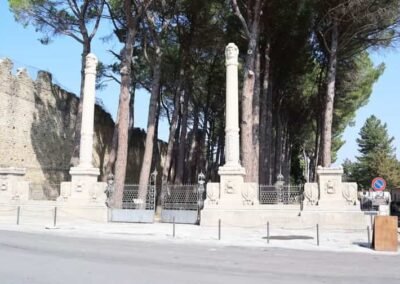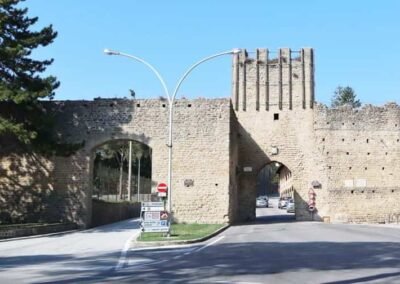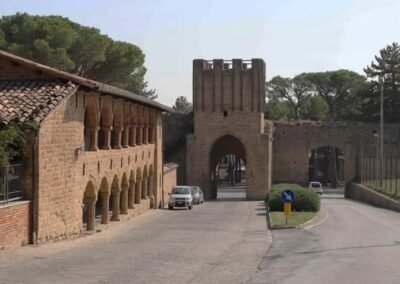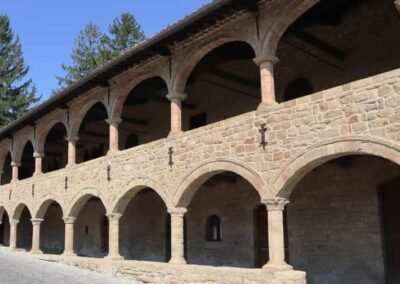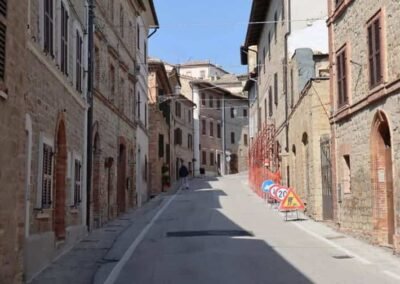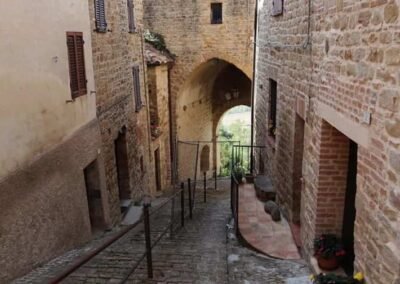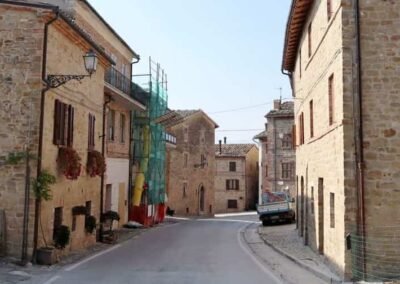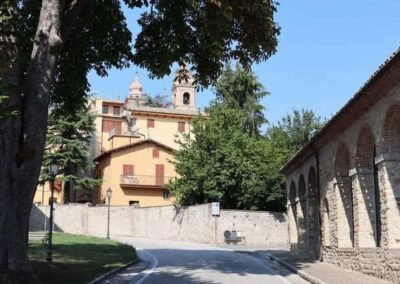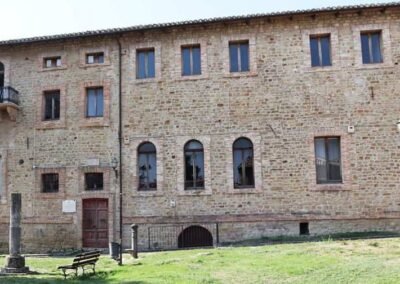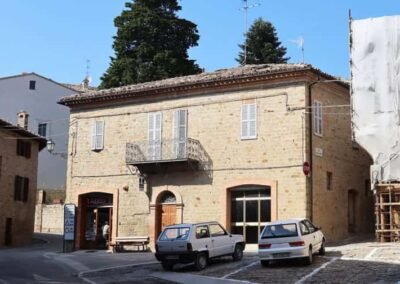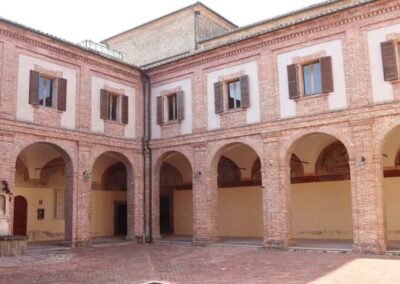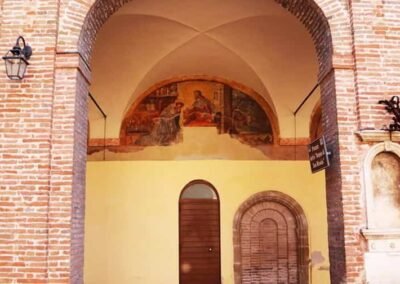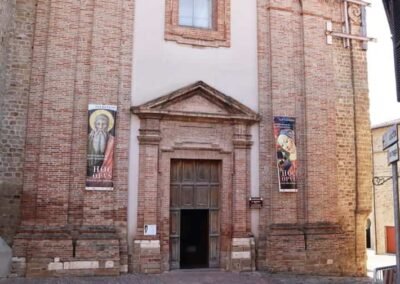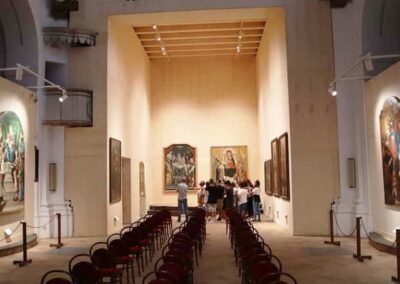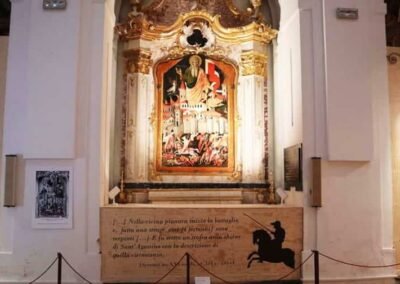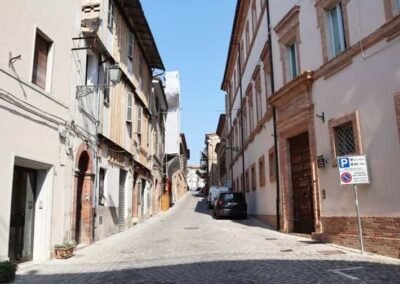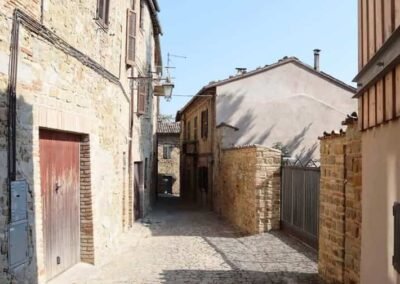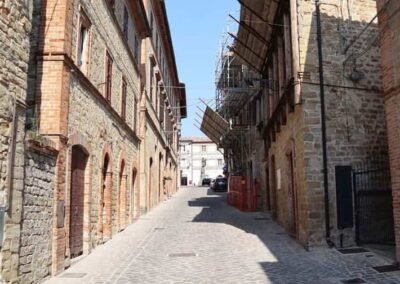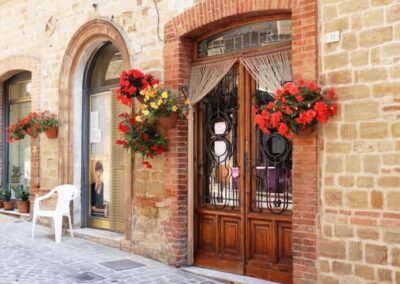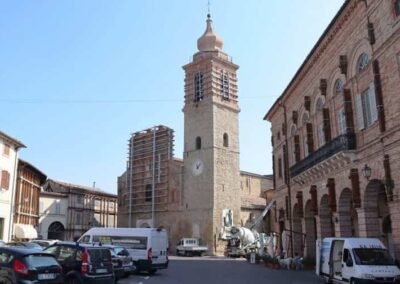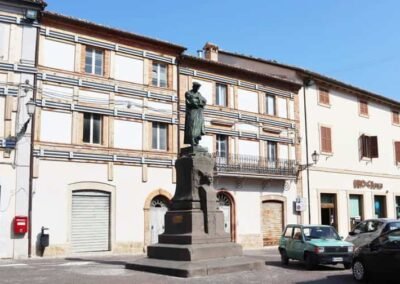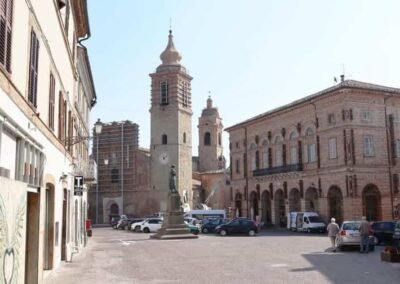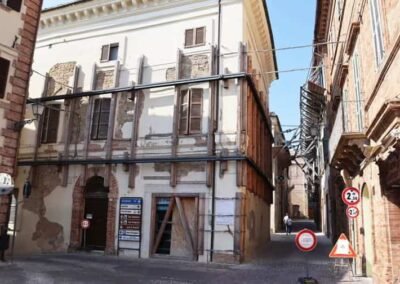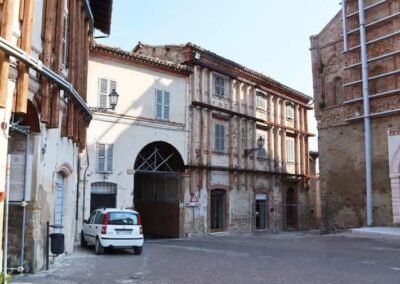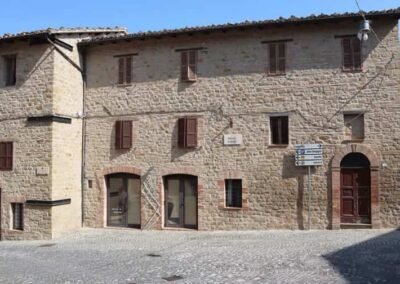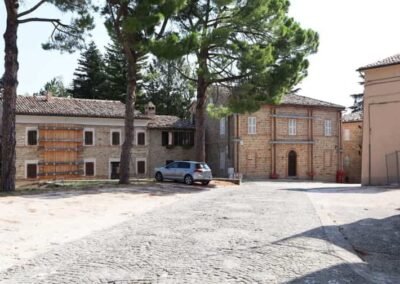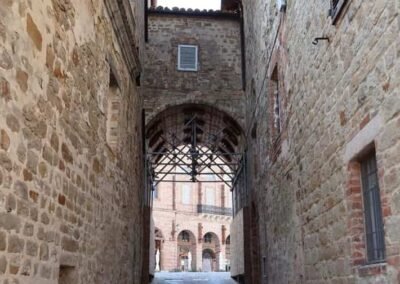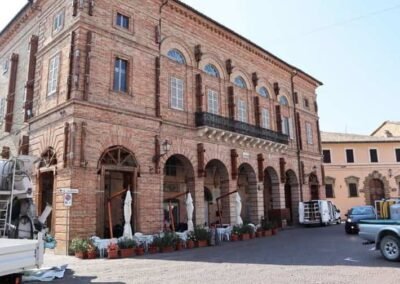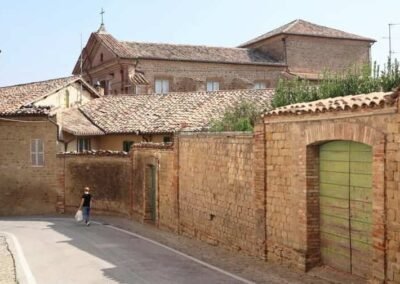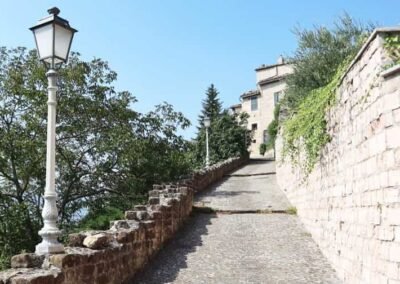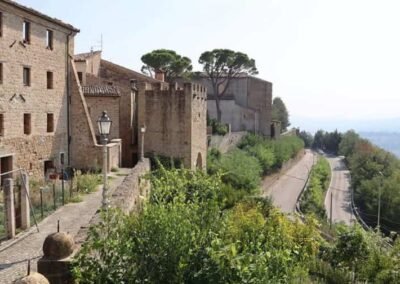HOME
THE REGIONS OF ITALY
PLACES IN ITALY
Italy in Photos
Piazza A. Gentili, 62026 San Ginesio MC, Italy (September 2020)
San Ginesio
San Ginesio, is situated in the rolling hills of the Marche region in central Italy, is a small medieval town with a rich history and captivating charm. Often overshadowed by more famous Italian destinations, San Ginesio offers visitors an authentic and unspoiled glimpse into Italy’s past. Located approximately 70 kilometres from the Adriatic coast and surrounded by the natural beauty of the Sibillini Mountains, the town is celebrated for its remarkable blend of historical architecture, artistic heritage, and breathtaking views of the surrounding countryside. San Ginesio’s origins date back to the Roman period, but it was during the Middle Ages that the town truly flourished. Named after its patron saint, St. Genesius, a martyr from North Africa, San Ginesio gained prominence as a fortified town during the 12th and 13th centuries. Its strategic position made it a valuable stronghold during the era of warring city-states and regional conflicts between the Papal States and the Holy Roman Empire. The town’s defensive heritage is still visible today, with well-preserved medieval walls and gates, such as the Porta Picena and Porta Alvaneto, which give visitors a sense of its military importance during medieval times. At the heart of San Ginesio lies its beautiful historic centre, which is a testament to the town’s medieval and Renaissance past. The central square, Piazza Gentili, is named after Alberico Gentili, one of the town’s most illustrious figures and a founding father of international law. Dominating the square is the Collegiate Church of San Ginesio, a striking example of Romanesque-Gothic architecture. The church, with its unique asymmetrical façade and stunning rose window, houses numerous works of art, including frescoes, wooden sculptures, and ancient tombs. It is one of the most important architectural landmarks in the town, reflecting both its religious and cultural significance.
Another notable structure is the Ospedale dei Pellegrini, or Pilgrims’ Hospital, which dates to the 13th century. This hospital was once a resting place for pilgrims traveling to Rome along the Via Lauretana, a pilgrimage route that passed through the region. The building now serves as a museum and cultural centre, preserving San Ginesio’s legacy as a town that welcomed travellers and pilgrims from across Europe. San Ginesio is also known for its lively cultural scene and strong sense of community. Throughout the year, the town hosts a variety of festivals and events that celebrate its history and traditions. One of the most famous is the Palio di San Ginesio, an annual medieval festival that takes place in August. This event includes historical re-enactments, jousting tournaments, and colourful parades, transporting visitors back to the town’s medieval heyday. The festival serves as a reminder of the town’s vibrant past and its enduring connection to its cultural roots. San Ginesio was significantly impacted by a series of powerful earthquakes in 2016. These quakes, part of a larger seismic event that affected the broader areas of Marche, Umbria, Lazio, and Abruzzo, devastated the town. The earthquake left more than two-thirds of homes in the historic centre of San Ginesio uninhabitable, and hundreds of families were forced to relocate. Even today, the scars of the disaster are visible, with many buildings, including some of its most important historical structures, remaining inaccessible or severely damaged. The village has been undergoing efforts to rebuild. The RINASCO project, which focuses on post-earthquake recovery, has played a vital role in promoting social cohesion and economic recovery in the region. The earthquake not only reshaped the town’s landscape but also highlighted the resilience of its people and their commitment to reviving San Ginesio.
The natural beauty surrounding San Ginesio is another key attraction. The town is often referred to as the “Balcony of the Sibillini” due to its panoramic views of the Sibillini Mountains, which are part of a national park offering numerous outdoor activities such as hiking, cycling, and nature walks. The lush landscape of vineyards, olive groves, and fields surrounding San Ginesio provides a serene and picturesque setting, making it a perfect destination for nature lovers and those seeking tranquillity. San Ginesio is also known for its culinary delights, offering a taste of traditional Marche cuisine. Local dishes feature seasonal ingredients and regional specialties such as ciauscolo, a soft, spreadable salami, and vincisgrassi, a rich baked pasta like lasagne. Visitors can enjoy these authentic flavours in the town’s cosy trattorias and restaurants, often accompanied by fine wines produced in the region. For those looking to explore a lesser known yet culturally rich destination, San Ginesio offers an unforgettable experience. Its historical significance, artistic treasures, vibrant festivals, and stunning natural surroundings make it a must-visit for anyone seeking a deeper connection to Italy’s history and traditions.
Photo Gallery of Walk 1 – Via S. Michele to Loggia Amblingh
Approximately 1.23 km – 0.76 miles
The walk starts in Via S. Michele – Parco Villa Comunale, Viale Rimembranza – Viale Rimembranza – Piazza Guglielmo Marconi – Via Tre Segni – walk back to Piazza Guglielmo Marconi – Municipal Market Hall of Santa Chiara, Piazza Santa Chiara – Via Sportello – Via Tripoli – Via Santa Maria – Chiesa Santa Maria Maggiore, Via Santa Maria – Via Santa Maria – Piazza del Tomolo – Via Catena – Porta Catena, Loggia Amblingh
Photo Gallery of Walk 2 – Piazza del Tomolo to Via Adriatica
Approximately 0.60 km – 0.37 miles
The walk starts in Piazza del Tomolo – Via Santa Maria – Via Giosia – Piazza L. V. Pudente – Cattedrale di San Giuseppe, Piazza L. V. Pudente – Piazza L. V. Pudente – Via Vescovado – Piazza L. V. Pudente – Piazza del Popolo – Via Adriatica
COPYRIGHT © 2018-2025 ITALY IN PHOTOS - ALL RIGHTS RESERVED
